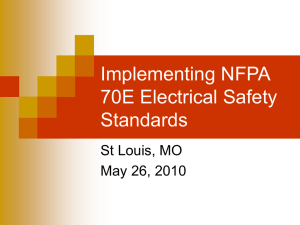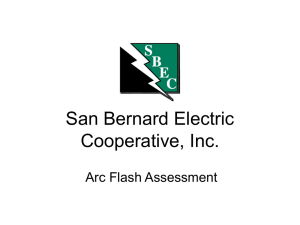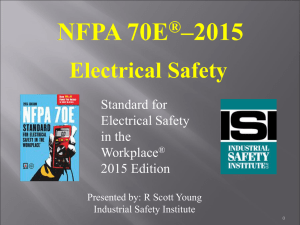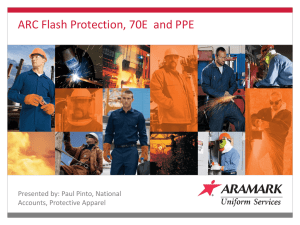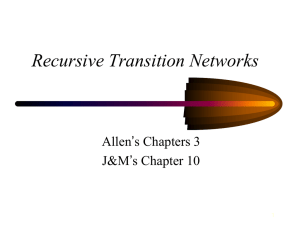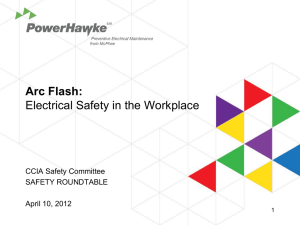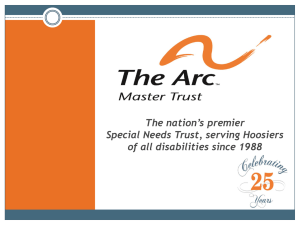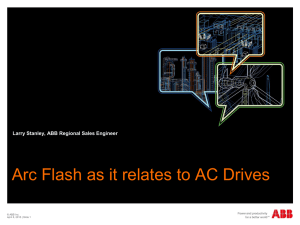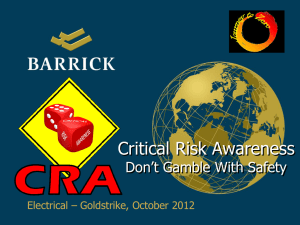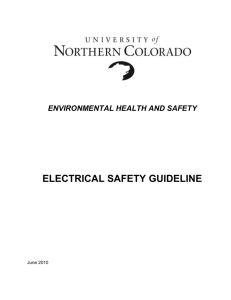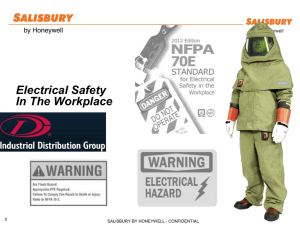Arch Flash Safety
advertisement
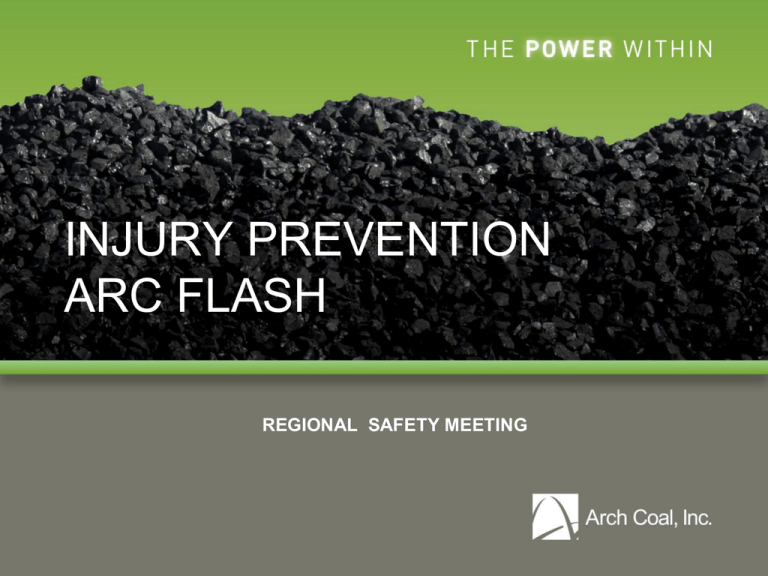
INJURY PREVENTION ARC FLASH REGIONAL SAFETY MEETING Arc Flash & Arc Blast • Arc Flash – electrical short circuit that occurs when air flashes from an exposed live conductor, to either another conductor or to ground. • Arc Blast – pressure wave caused by the arc flash Arc Flash/Blast • Concentrated energy explodes outward • High intensity flash • Temperatures can reach 35,000 (skin ignites 480) • Pressure wave can reach 200lbs/sq. inch • Vaporizes conductors and copper with exploding particles. SEVERITY FACTORS Arc Flash Effects • Severe burns • Broken bones • Vision damage • Hearing loss • Brain/internal injuries • Punctures and lacerations • Death SCOPE OF THE PROBLEM • Each year, MSHA identifies about 100 injuries as “non-contact electric arc burns” • 55% are in bituminous coal • 84% are on systems of 600V or less MSHA DATA Causes of Arc Flash • Improper training • Improper work procedures • Dropped tools • Accidental contact with electrical systems • Installation failure • Improper Design/Repair • Voltage testing with inappropriate equipment Causes of Arc Flash (cont.) • Buildup of dust, corrosion on insulating surfaces • Lack of maintenance • Sparks produced during racking of breakers, replacement of fuses and closing into faulty lines. • Over confidence Resource Documents MSHA 75 and 77 All power circuits and electrical equipment shall be deenergized before work is done on such circuits and equipment, except when necessary for trouble shooting or testing. Trouble shooting and Testing • Only low and medium voltage circuits • Purpose is to determine voltage and current • Qualified person with protective gloves ARC FLASH PREVENTION The best way to prevent arc flash incidents is to DE-ENERGIZE and LOCK/TAG circuits before beginning work. How is your Lock out program? If we are Locking out properly, then when do we have exposure/risk? • Trouble shooting and testing • Removing covers, doors and lids with energized parts. • Inadequate Barriers between circuits. Energized Work Approval • • • • Description of the task to be performed Justification for energized work Job specific hazards PPE Can be verbal or written (AMS Operator) Adds accountability/ Helps define SAFE PERSONAL PROTECTIVE EQUIPMENT Low/Medium rated Gloves • Can use dry Leather work gloves in Good Condition • Over 120 volts systems must be intrinsically safe What is a Calorie? IEEE Standard 1584 Systems rated below 240 V to ground and below about 400A (125kVA) are not considered ARC FLASH Hazards. These systems still present a SHOCK Hazard. Arc-Rated FR Clothing & PPE • Layering – Outer layers must be flame resistant – Under layers must be non-melting • Coverage – Clothing must cover potentially exposed areas (wrist, neck) • Care & Maintenance – Inspect before use – Launder according to mfg’s instructions PPE - Hazard Risk Category 0 0-1.2 cal/cm2 • • • • • 100% cotton long sleeve shirt Long pants Safety glasses Hearing protection Leather and insulated gloves (as required) • Leather work boots PPE - Hazard Risk Category 1 1.2 - 4 cal/cm2 • 4+ cal long sleeve shirt & long pants (or) coveralls • Hardhat • Safety glasses • Arc rated faceshield • Hearing protection (inserts) • VR gloves • Leather gloves • Leather work boots PPE - Hazard Risk Category 2 4 - 8 cal/cm2 • 8+ cal long sleeve shirt & long pants (or) coveralls • Hardhat • Safety glasses • Arc rated faceshield • Hearing protection (inserts) • VR gloves • Leather work boots PPE - Hazard Risk Category 3 8 - 25 cal/cm2 • 25+ flashsuit w/ hood over long sleeve shirt and long pants • Safety glasses • Arc rated faceshield • Hearing protection (inserts) • VR gloves • Leather gloves • Leather work boots PPE - Hazard Risk Category 4 25 - 40 cal/cm2 • 40+ flashsuit w/ hood over FR long sleeve shirt and long pants • • • • Safety glasses Arc rated faceshield Hearing protection (inserts) VR gloves • Leather gloves • Leather work boots BEST PRACTICES Analyze your ELECTRICAL System Low arc flash circuit breakers Current Limiting Fuses Equipment Design VOLT METER- SWITCHES TO PROPER VOLTAGE Label Hazard/PPE Requirements Make Lock Out Easy Use Good Safety Practices Summary • Lock and Tag Program • Identify activities with exposure • Determine potential of injury • Look for alternative methods • Put administrative controls in place • Train and provide appropriate PPE • Evaluate the effectiveness of your process SafetyShare.org disclaimer Material presented on the National Mining Association's SafetyShare.org website is intended for information purposes only and does not constitute advice. The National Mining Association tries to provide content that is true and accurate as of the date of writing; however, we give no assurance or warranty regarding the accuracy, timeliness, or applicability of any of the contents. Visitors to the SafetyShare.org website should not act upon the website's content or information without first seeking appropriate professional advice. The National Mining Association accepts no responsibility for and excludes all liability in connection with browsing this website, use of information or downloading any materials from it, including but not limited to any liability for errors, inaccuracies, omissions, or misleading statements. The information at this website might include opinions or views which, unless expressly stated otherwise, are not necessarily those of the National Mining Association or any associated company or any person in relation to whom they would have any liability or responsibility. 41 from SafetyShare.org
